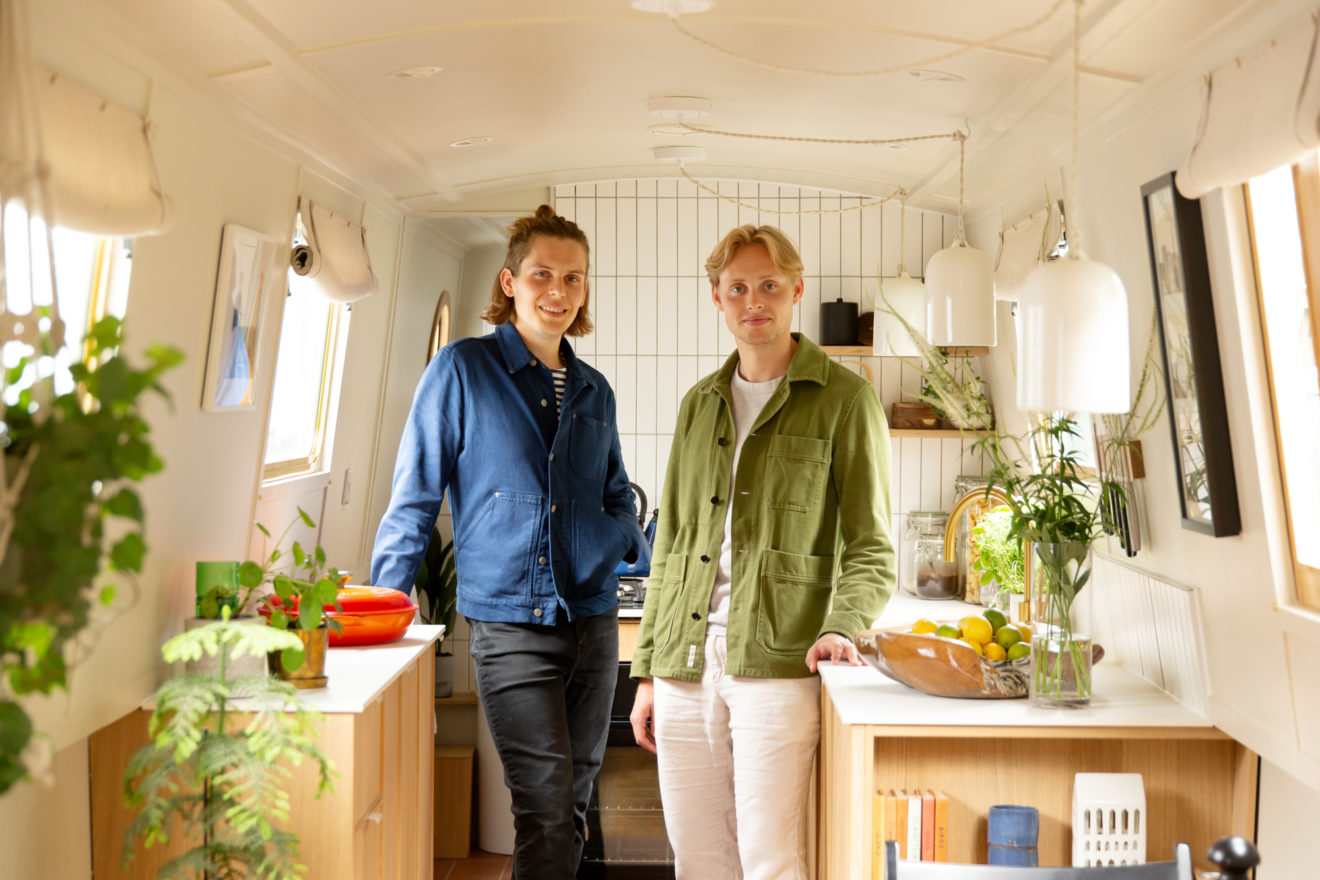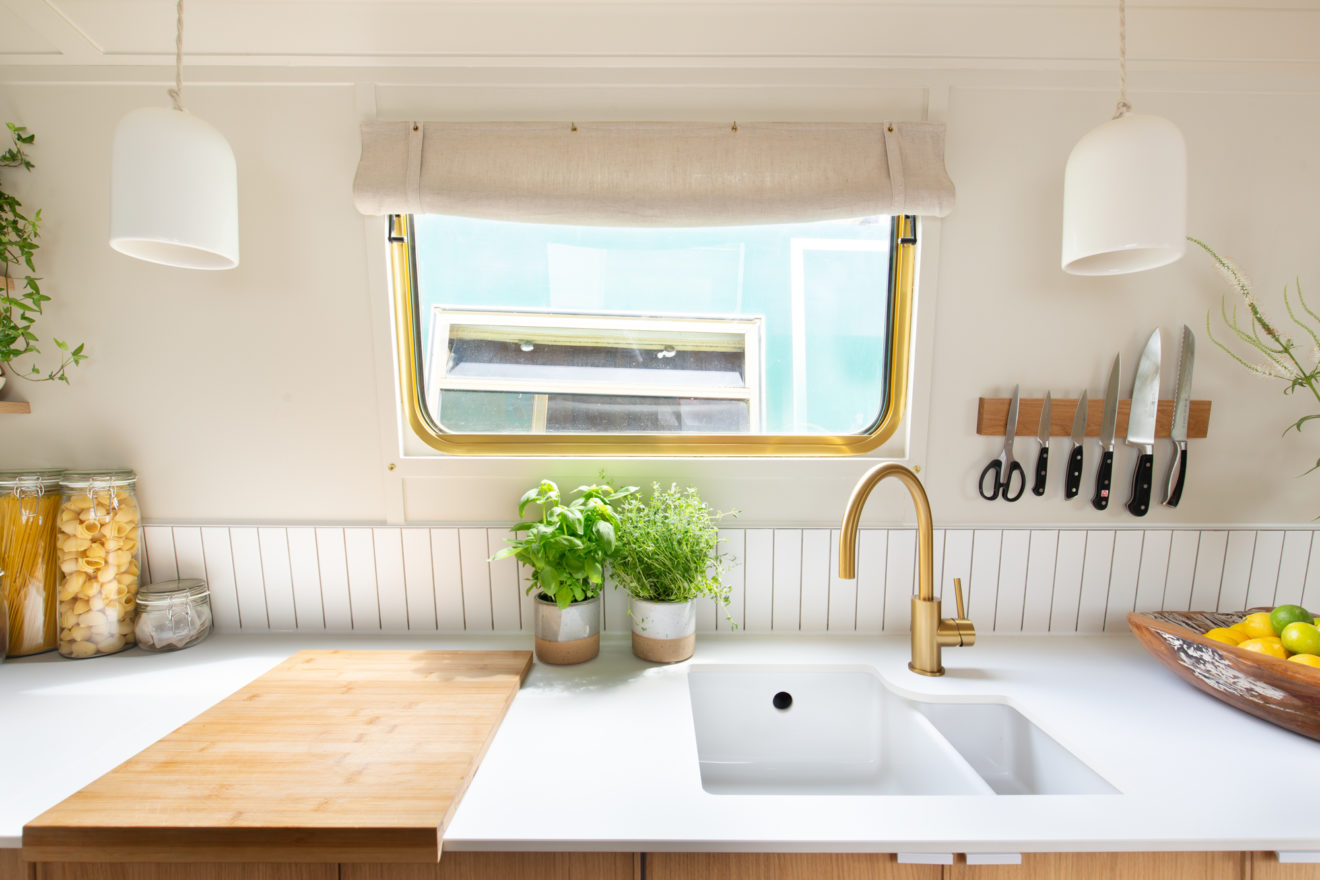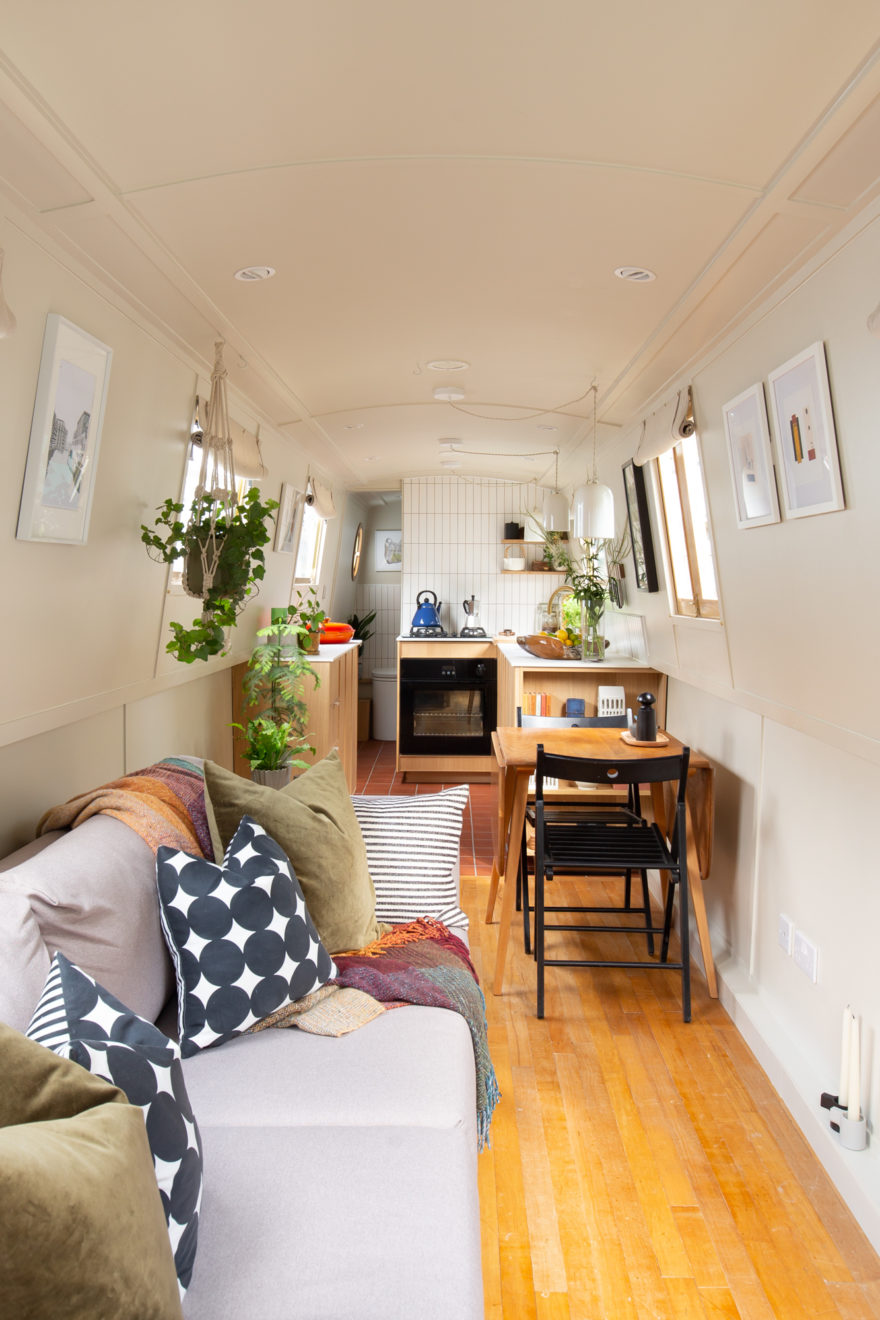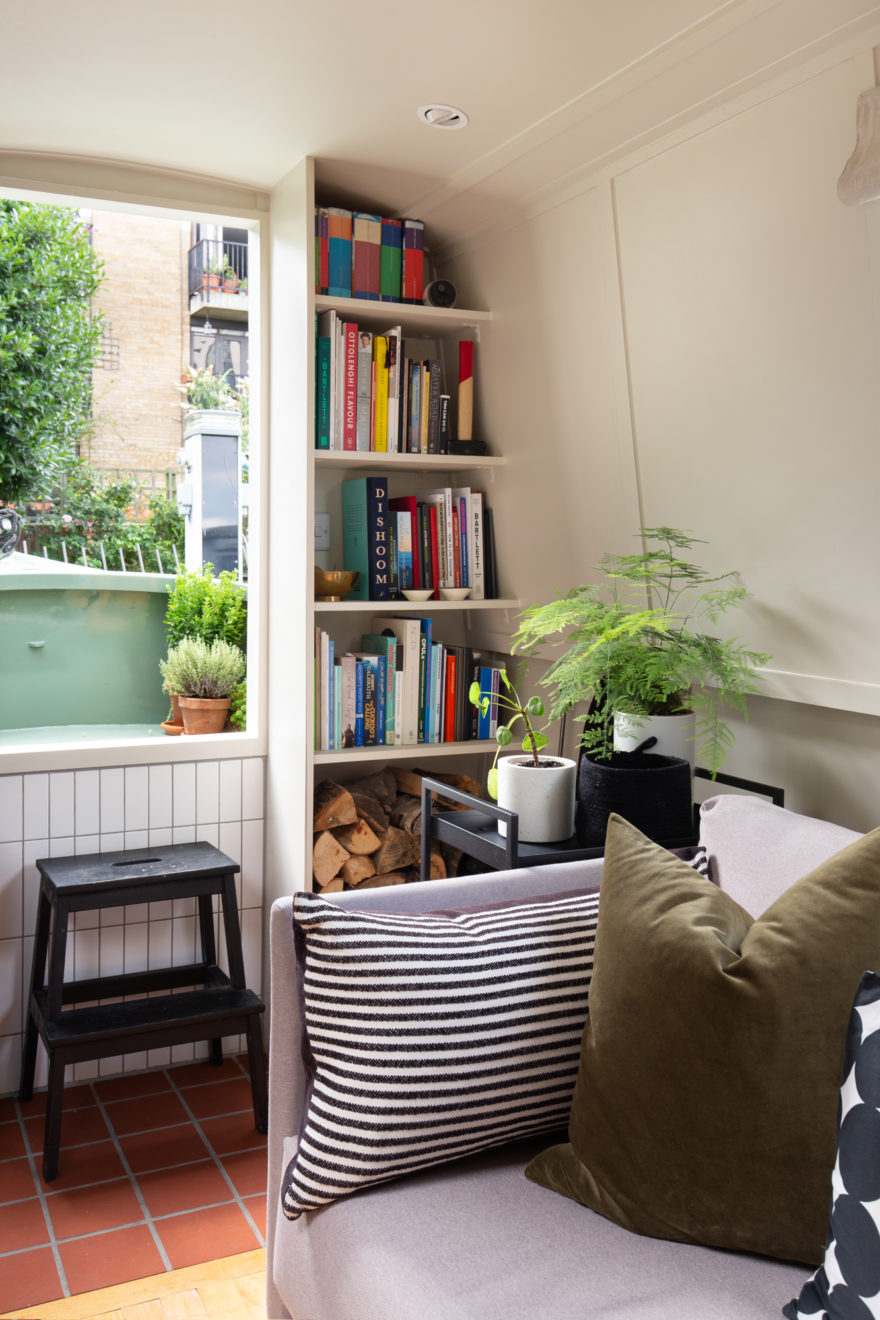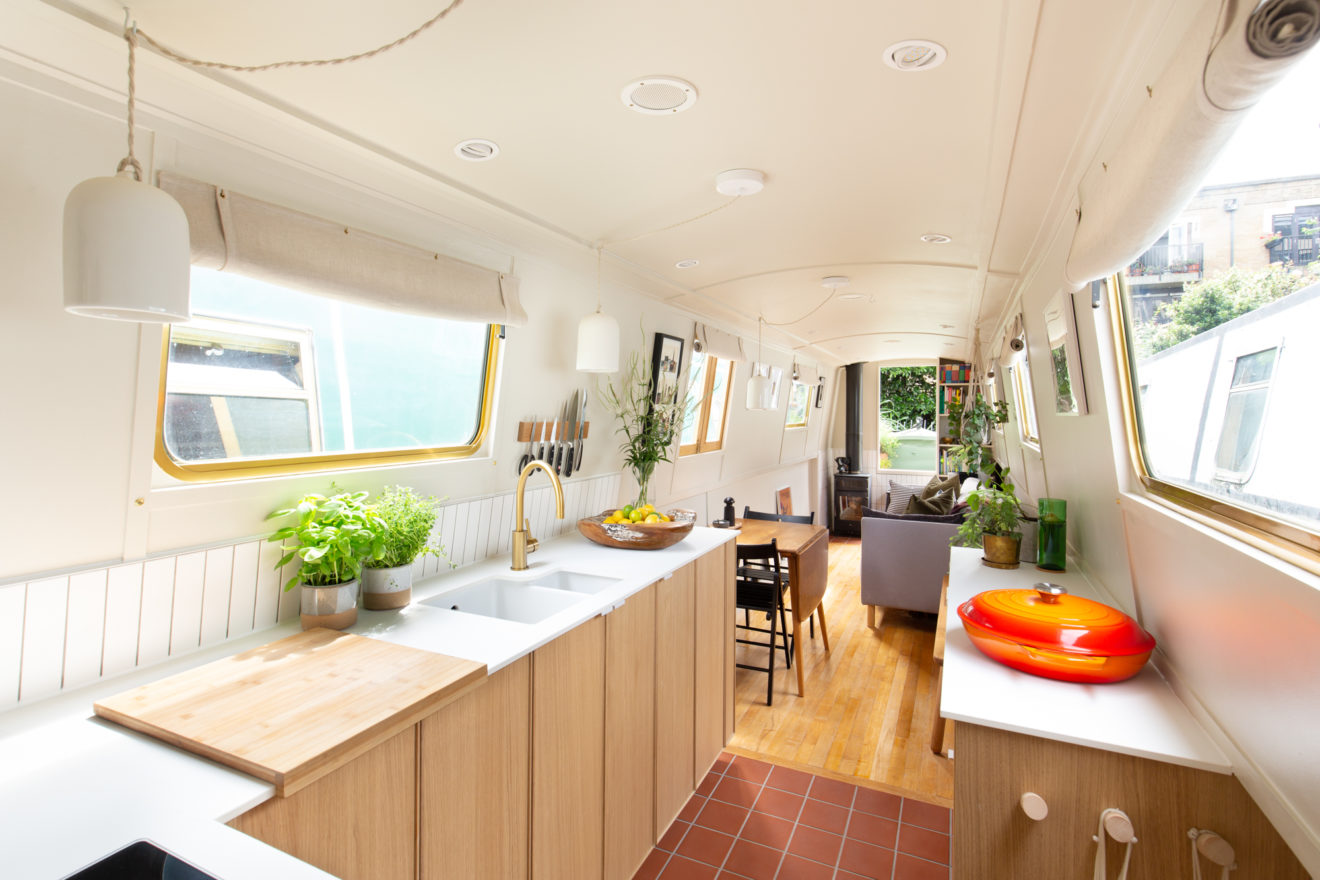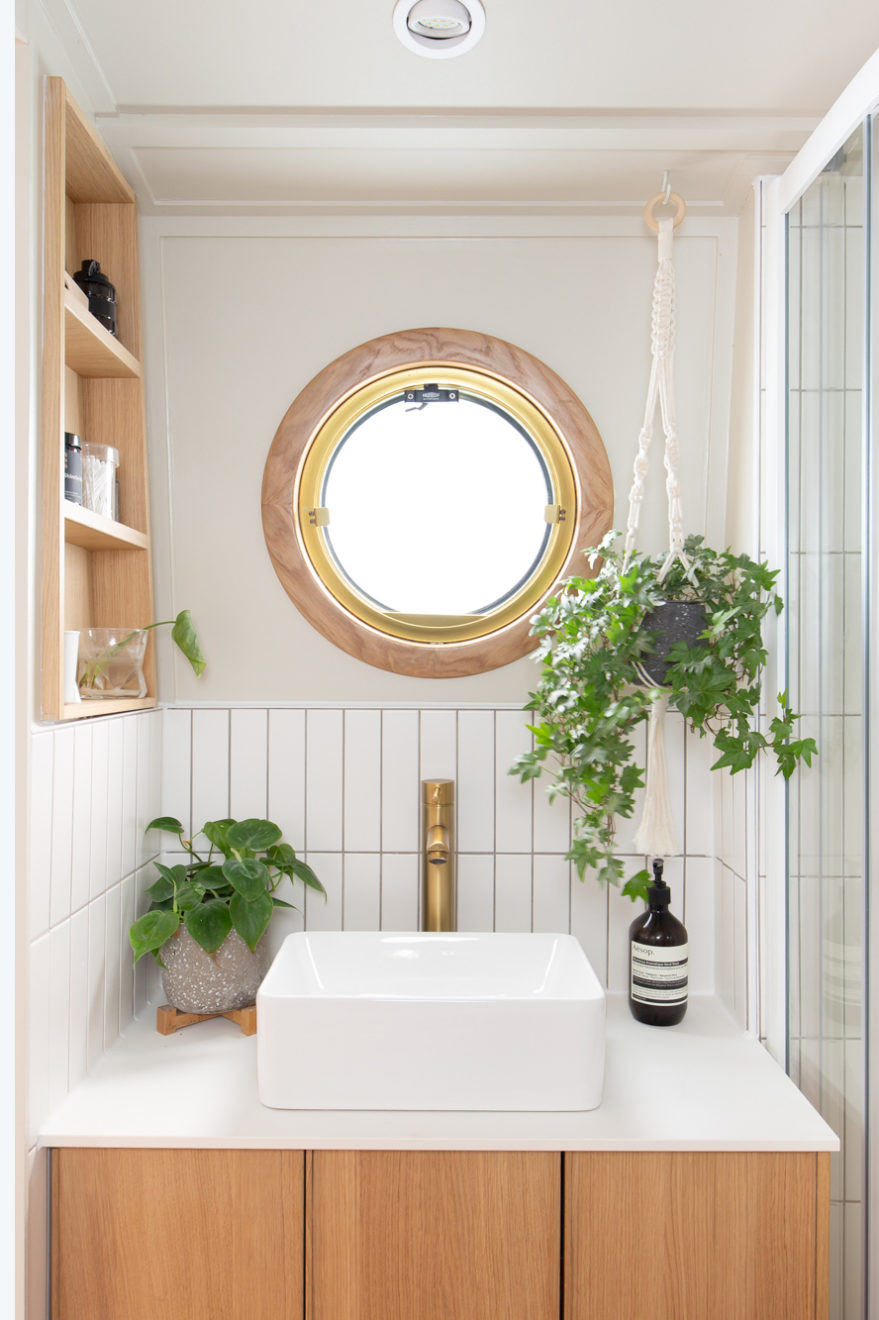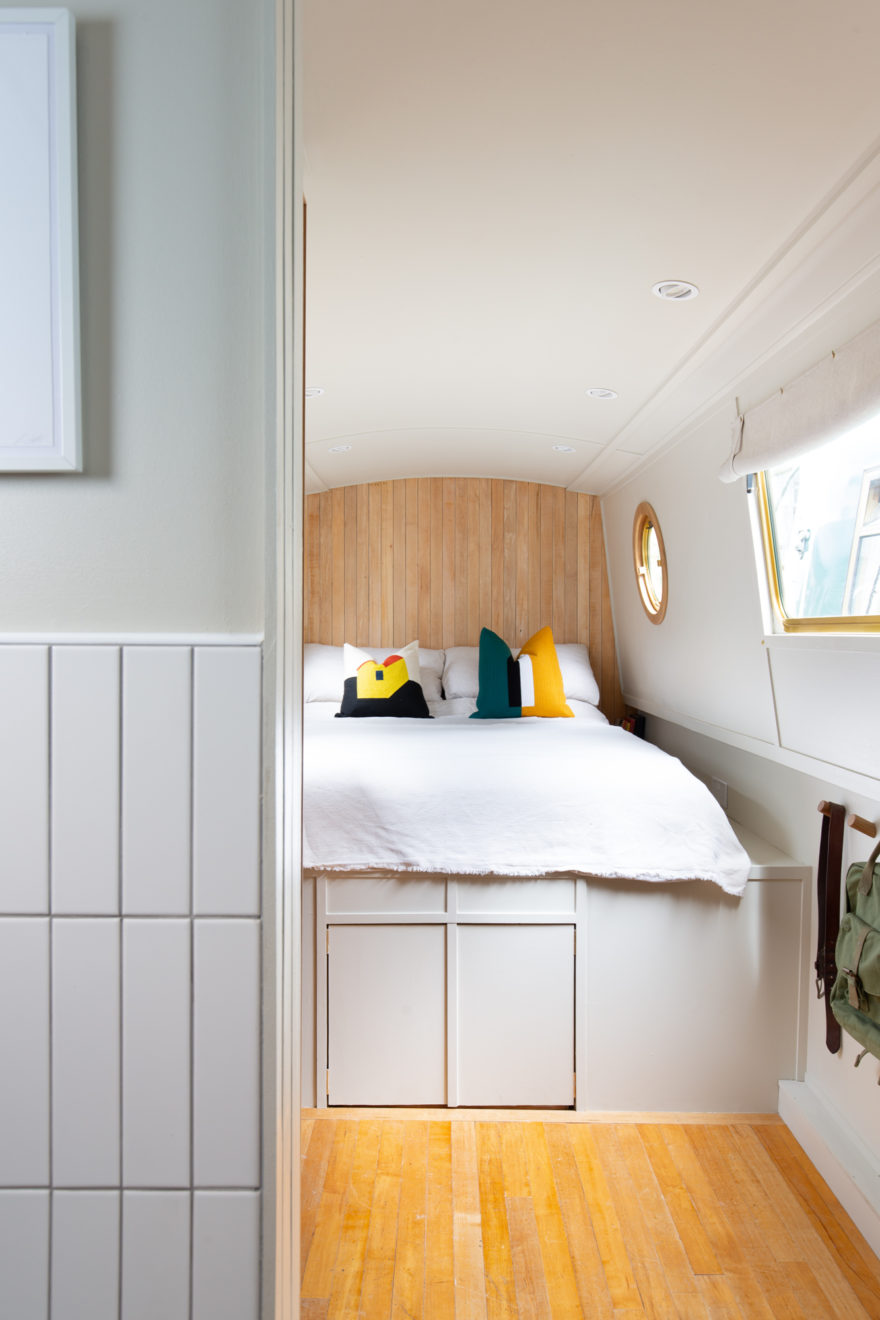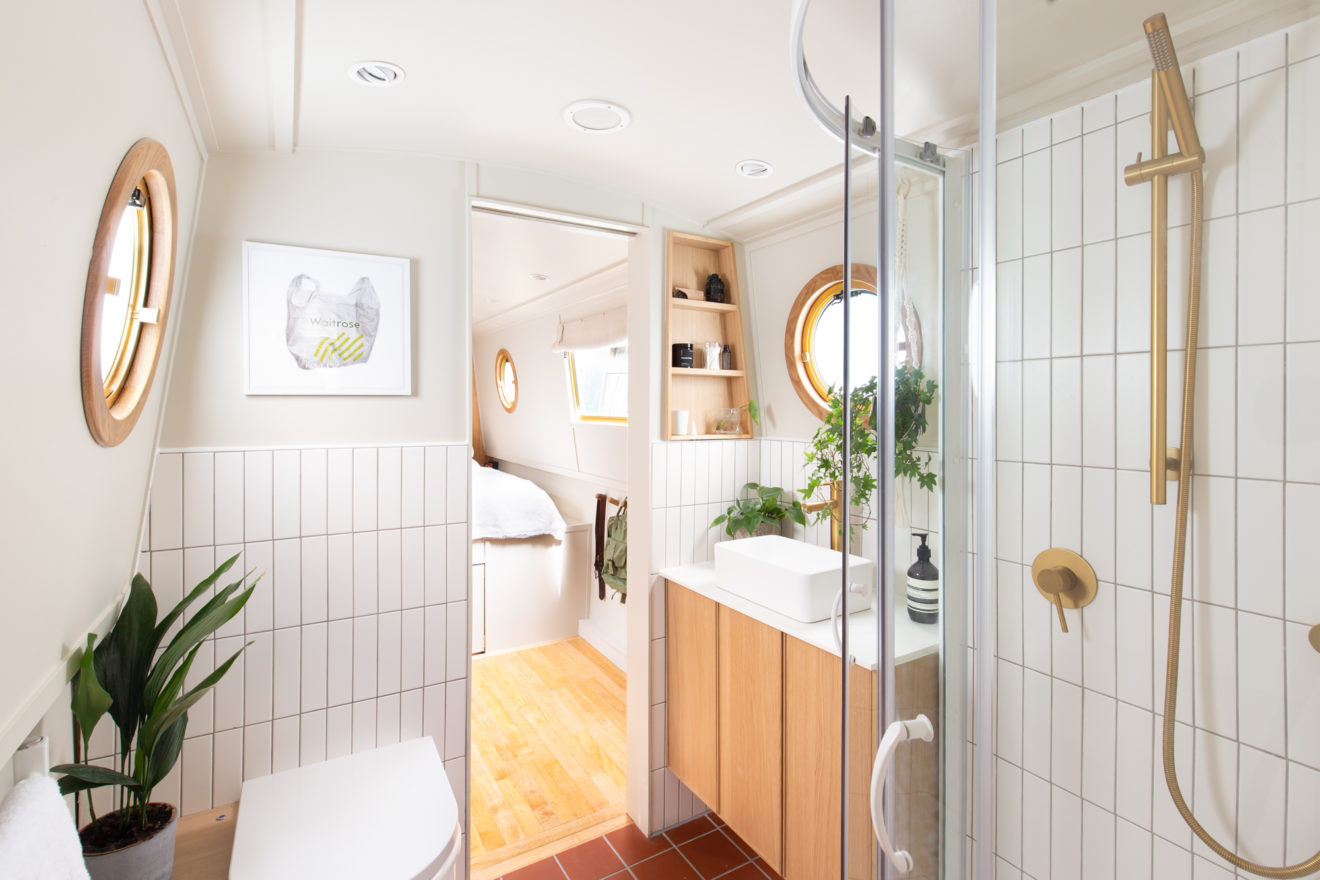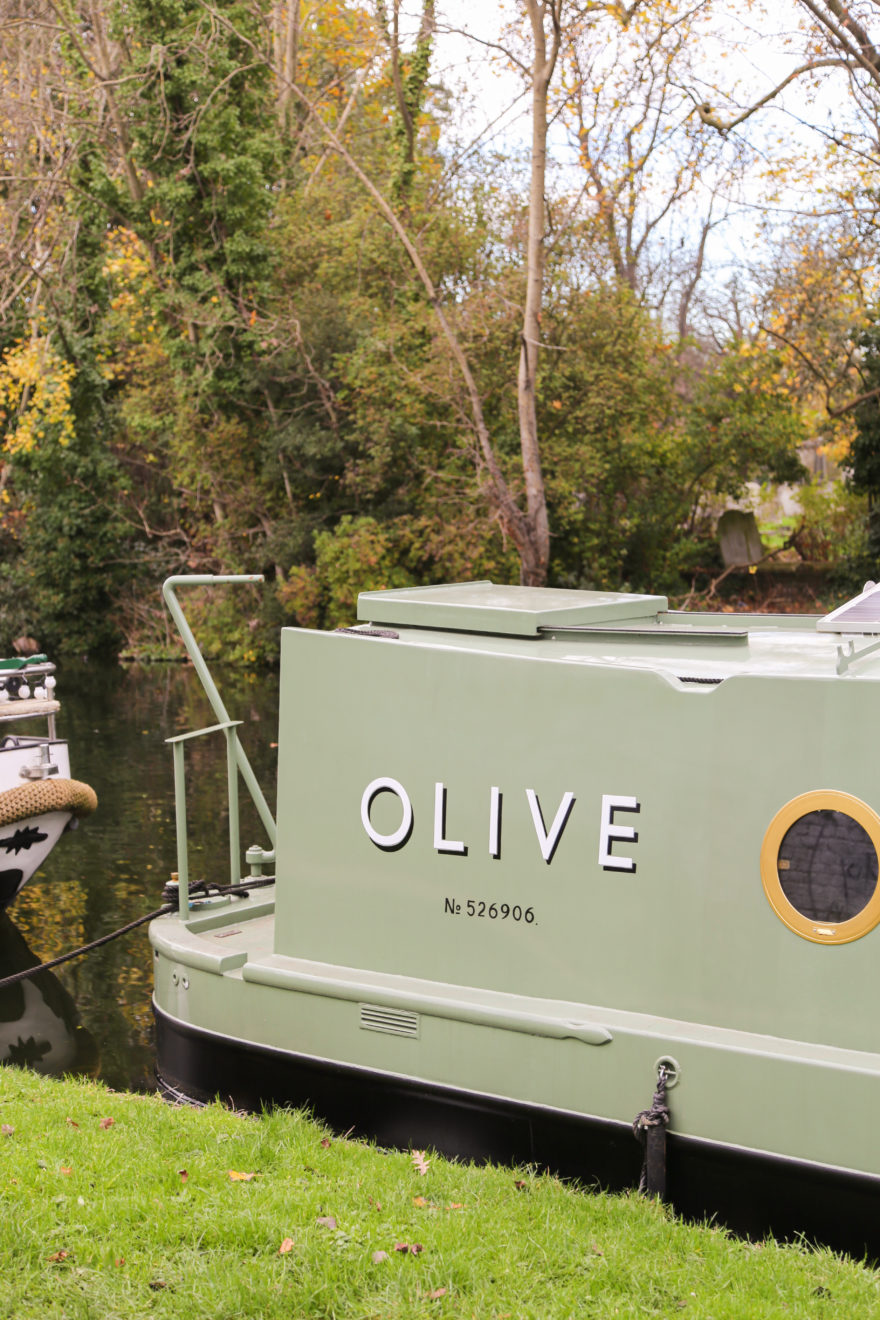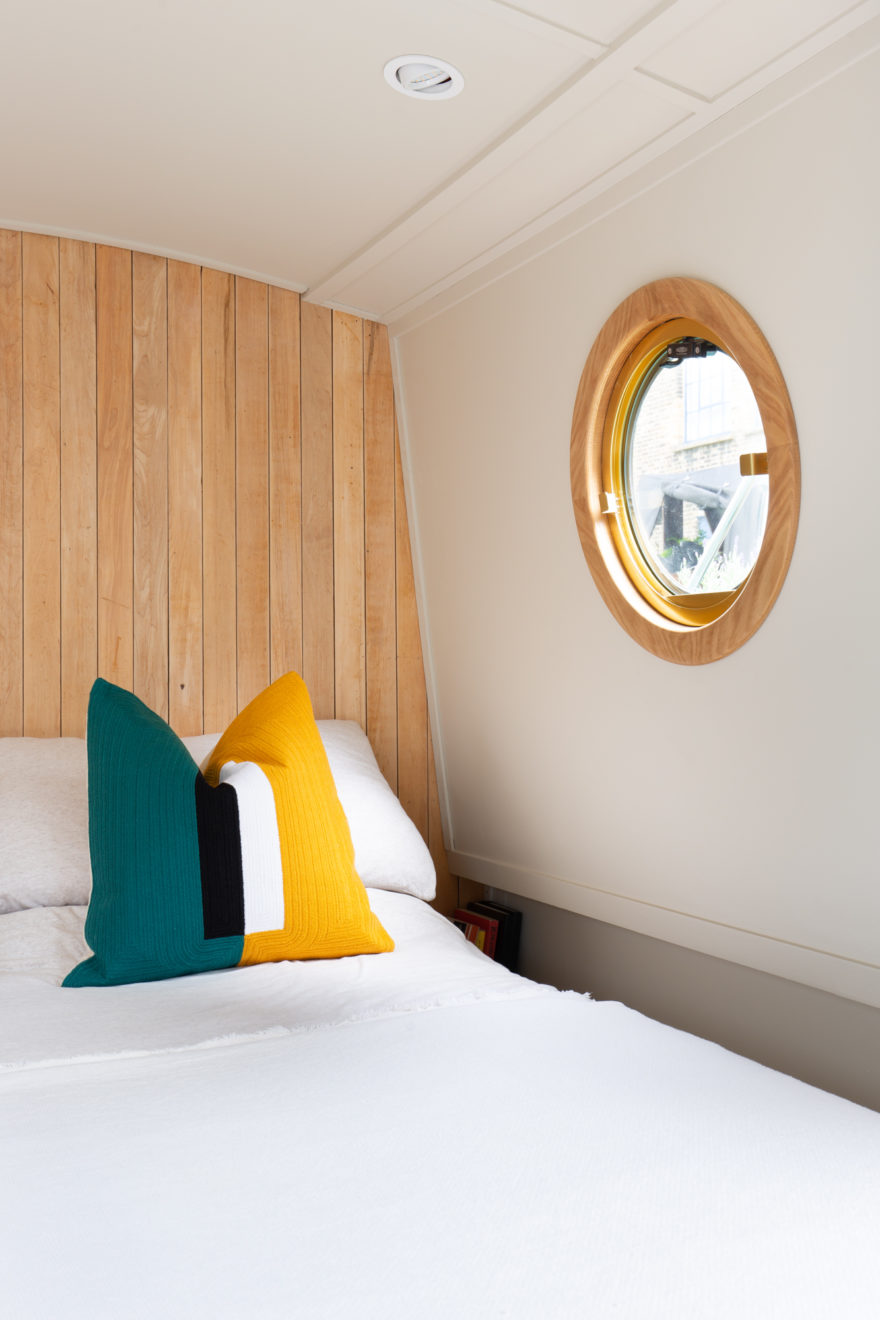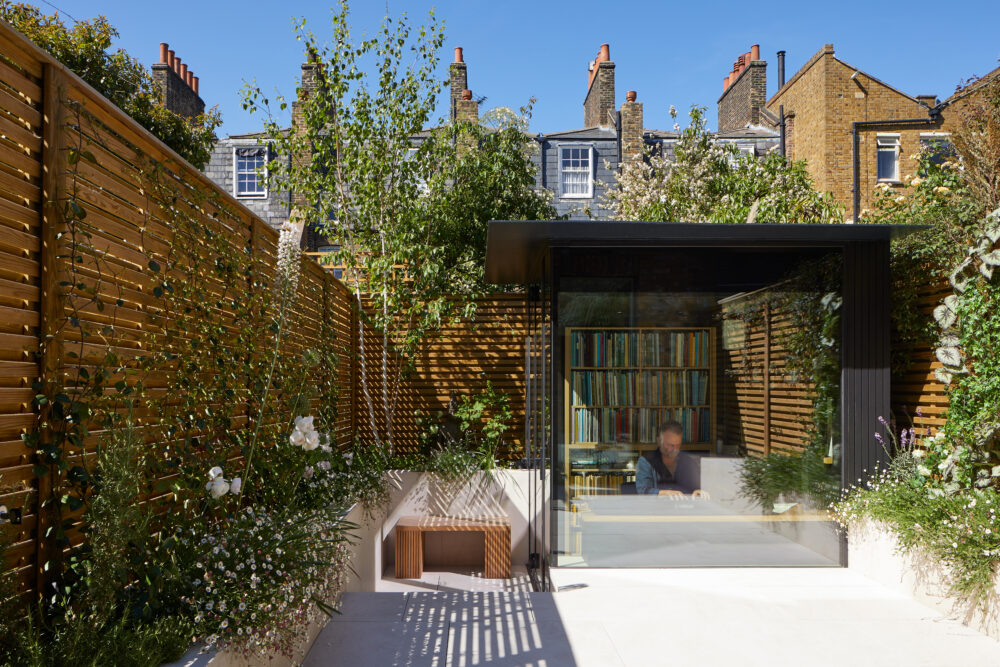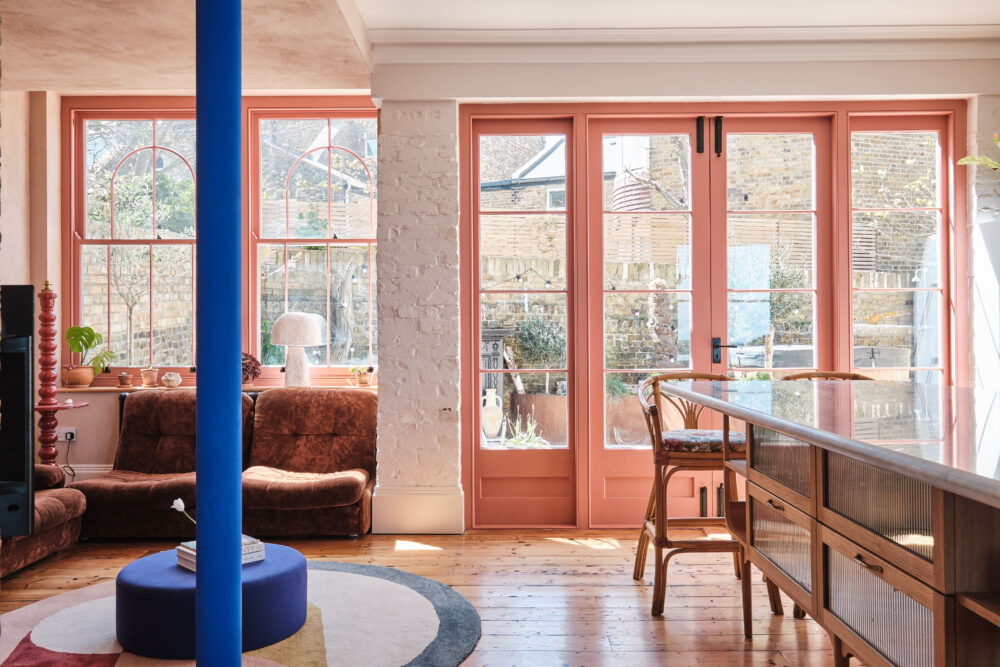Olive
One of our newest listings is Olive, the one-bedroomed 59ft contemporary narrowboat whose palette of natural materials sits in perfect harmony with its location on the water. We chat to Olive’s owners, Alex and Dan, about how their backgrounds as architectural designers at McLaren Excell and Carmody Groarke informed the thoughtful interiors, and what they enjoy most about boat living.
We met at university eight years ago whilst studying architecture and we have been living and working in London for the last five. We have lived in various rental properties in South London, however, two years ago, we embarked upon a different approach to London living – we bought a narrowboat and began making it into our first home.
It was a conversation with a friend at university who had been living on the canals in London for a few years. What started as a couple of logistical questions, quickly became a full-blown interrogation into the inner workings of narrowboat living. The proximity to nature, whilst living so centrally, is something that we couldn’t achieve otherwise in London. Being able to cook, eat and relax with wildlife at your window was a major attraction for us.
We had looked at a couple of boats which we fell in love with, but we were never completely satisfied with the layouts and finishes which meant we would have renovated them anyway. We thought it would be more interesting if we looked at purchasing a Sailaway (an empty shell with basic fittings and fixtures) – somewhere we could exercise our creativity and put our own stamp on something. There was a lead time with this option, so we spent the time sketching layout options and collecting ideas to maximise the spatial layout.
The thing that drew us towards a narrowboat was the versatility of it. At a moment’s notice we’re able to unpin and travel to any location via the canals. We have spent most of our time on the boat on a continuous cruiser licence which means you spend two weeks in a location before moving onto the next – all whilst living completely off grid. It’s meant we’ve been able to frequently change neighbourhoods and explore a lot of London at the same time.
We always had quite a clear vision for the internal spaces – a natural and restrained material palette with references to more traditional panelled boats. The layout was informed by the requirement for the most flexible space possible. Most of the furniture is stand alone and can be moved to suit preference – for example we have a 1970s Ercol drop leaf table which is perfect for just the two of us, as well as having people over for dinner.
It has taken us two years to finish the interior, as we lived on the boat whilst doing the fit-out. Initially the process felt long and intensive, but we learnt to take it slowly and enjoy the experience. By having a more immersive and considerate process, we found that the design developed more organically and the finished boat’s spatial arrangement and materiality is much more successful.
There are a couple of obvious constraints to living on a boat. We have had to be very efficient with the space, calculating the sizes of all the furniture before buying anything so as not to have too many items in one area.
We are most pleased with the quality of the living space as the use of natural materials brings warmth and brightness to the space. We love having friends over, and dinner on summer evenings with the hatch doors open and candles lit is great.
We can safely say the novelty really doesn’t wear off, it’s remarkable to be so close to nature whilst being in London. Every day we are amazed by the amount of light that pools into the space, and the way the light reflects from the water ripples onto the ceiling is mesmerising. As well as a greater quality of life, we have also noticed that our approach to sustainability has also improved. We have solar panels powering our 12v system which includes lighting and fridge etc, and we’ve made a conscious effort to be more mindful about consumption. We also produce a lot less waste and consume less water which we are committed to taking forward on our next venture.
We feel that someone who is ready for a change of lifestyle would be perfect to live on Olive. City living often comes with many challenges and sacrifices, and we believe that life on the canals can present a slower, more connected and rewarding lifestyle that can ease the strains of the city. Our hope is that someone who is keen for living more with less and who wants an intrinsic connection to nature, people and water, can see themselves living on Olive!

